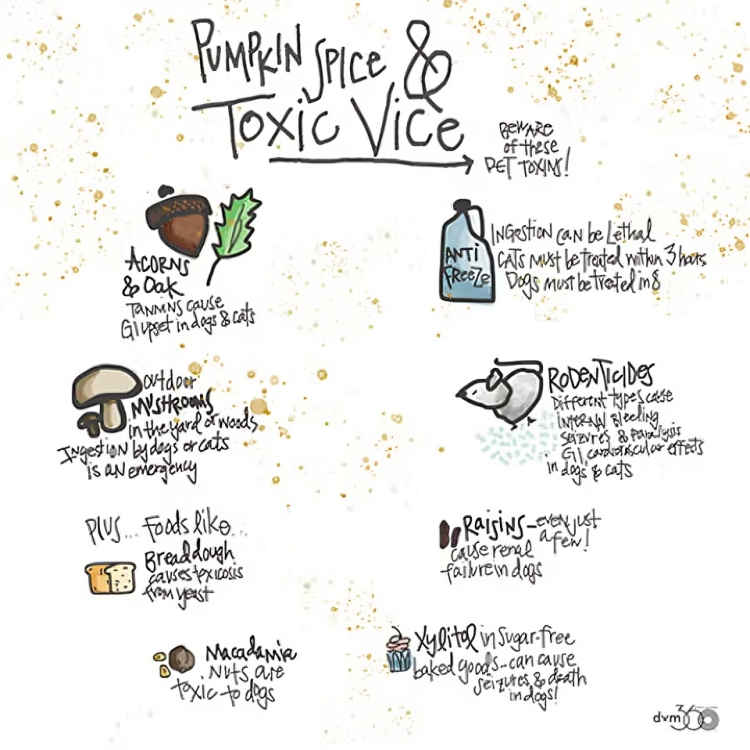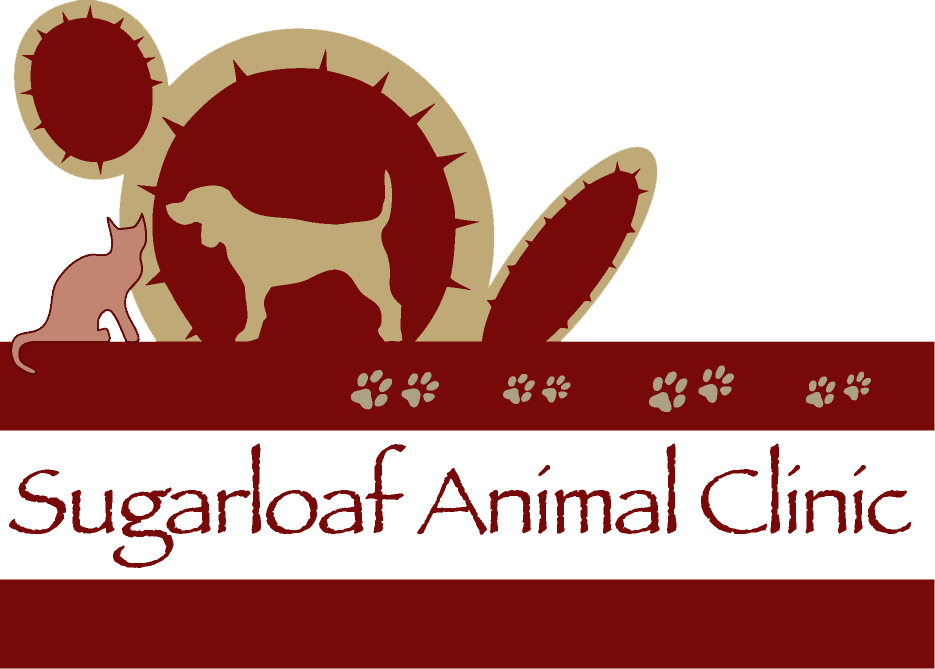
Download This Blog!
SUGARLOAF Blog
The fall season brings so many fun experiences for us humans – trick or treating, Thanksgiving prep, family events, and so much more. While this is an exciting time for us, there are certain things that are not as safe for our pets. Here are some things to consider to ensure you and your pet have the best holiday season.
House Guests and Stressed Pets:
While some of our furry friends love having family over, some pets may be a little more sensitive. It is important to be aware of how your pet is handling all the excitement in the house. Signs of stress could be behavioral – hiding, acting on edge, not wanting to eat as much. Physical symptoms can manifest too, including UTIs or GI upset. Epileptic dogs are more prone to seizures with changes in the environment. Cats are prone to urinary issues and may strain in the litter box or even experience a urethral blockage when stressed, preventing them from urinating.
If you are concerned your pet gets anxious with all the holiday hubbub, please let us know! There are medications we can prescribe, like trazodone or gabapentin, to help your pet feel more relaxed. These meds are very safe, generally well tolerated, and may help your pet feel less anxious through the holidays. Some changes you can implement at home to help your pet feel better are:
- Try to keep walks and meal times on a regular routine if possible
- Ensure they have a safe space, like a crate/bed/room, where they can be left alone if they want
- Make sure cats have the appropriate number of litter boxes (the litter box rule is # of cats + 1, i.e. 2 cats should have 3 boxes)
- Use Feliway diffusers for anxious kitties
- Consider talking to your vet about medicinal options
Food Toxicities:
Chocolate – This one is probably no surprise to you, but chocolate is very toxic to dogs! Toxicity is dose-dependent, meaning that clinical signs worsen with how much chocolate is ingested compared to the pet’s weight. The type of chocolate can also influence the levels of caffeine. White chocolate is the least toxic, then milk, and then dark chocolate is the most toxic.
Raisins — Crinkly and cute, raisins are common in many holiday desserts. However, raisins are dried grapes and grapes cause renal (kidney) damage in dogs and cats. What is unfortunate about grapes is there is not a certain dose that is considered toxic. Some pets may eat just one grape and experience severe kidney injury, while others may have more mild signs even after ingesting several.
Xylitol – A common artificial sweetener used in sugar free items, xylitol can be very dangerous to pets. Their bodies cannot process it like ours, causing a huge spike in insulin and low blood sugar. This can be very dangerous as low blood sugar (hypoglycemia) can cause collapse, seizures, and coma. We encourage pet owners to have Karo syrup at home. This can be used in instances of hypoglycemia by rubbing it directly on the gums. The sugar can be absorbed through the gums and give you time to reach the emergency room.
For all potential toxin exposures, we encourage you call us, go to an ER, or contact Pet Poison. ASPCA has a 24/7 poison hotline that you can call. They will inform you if your pet has eaten a toxic dose of an item. Additionally, they will formulate a treatment plan and your veterinarian can call them to discuss the case. For more food toxins, see the attached poster.
ASPCA Poison Control Phone Number: (888) 426-4435
Happy autumn! – Dr. Nisha Parasher & the team at Sugarloaf

